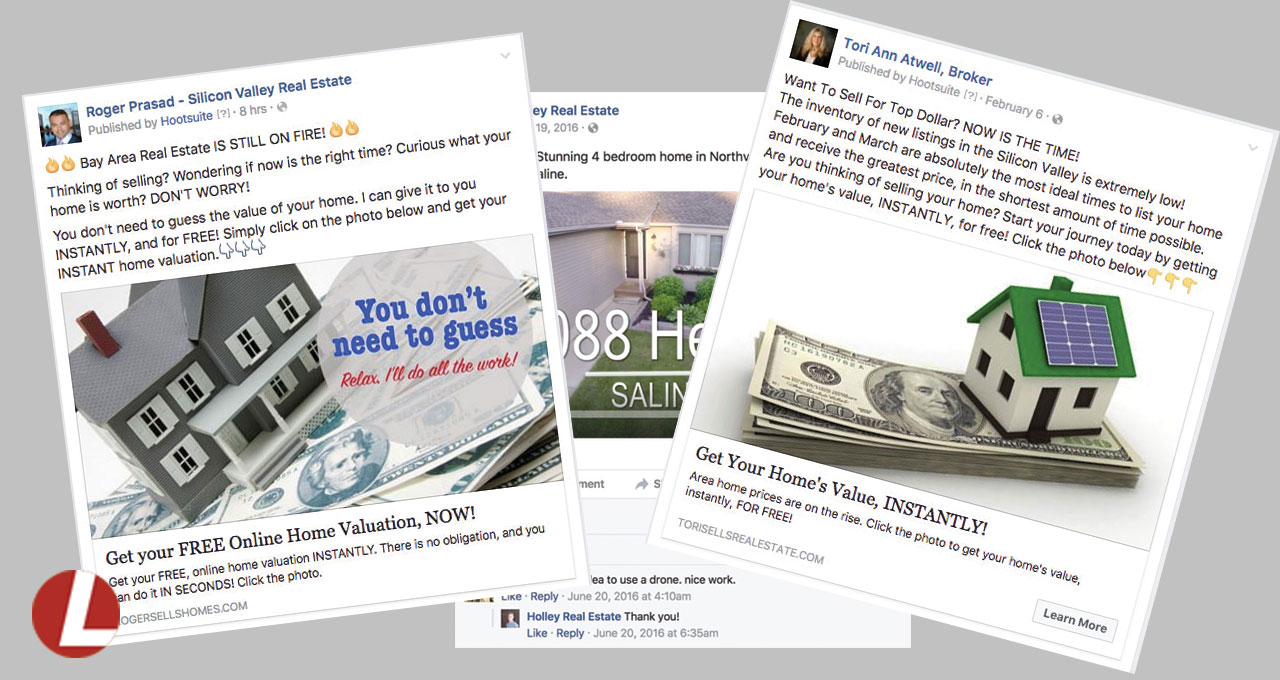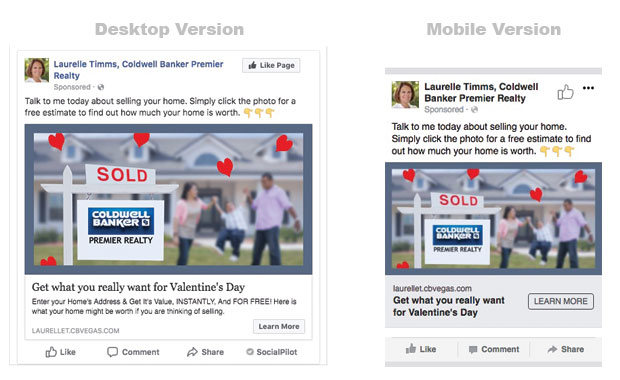You are viewing our site as an Agent, Switch Your View:
Agent | Broker Reset Filters to Default Back to ListAnatomy of the Perfect Facebook Real Estate Ad
April 08 2018
 With Facebook becoming more and more popular as an advertising platform for real estate agents, questions often come up as to which ads perform best by getting the most views and clicks. While it's true there are certain types of ads that outperform others, at its core, the anatomy of the perfect Facebook ad is the same, no matter what type of ad it is.
With Facebook becoming more and more popular as an advertising platform for real estate agents, questions often come up as to which ads perform best by getting the most views and clicks. While it's true there are certain types of ads that outperform others, at its core, the anatomy of the perfect Facebook ad is the same, no matter what type of ad it is.
These best practices are critical because they mean the difference between having your ad show up on people's timelines, getting them to click on your ad, and having your ad show up on very few timelines, making it impossible for lots of people to have the opportunity to click on it. So today, I'll share with you some best practices, key elements and considerations you must take when planning the perfect Facebook real estate ad.
Design for Mobile First
This is quite possibly THE NUMBER ONE element you must take into consideration when designing your Facebook ads. Per statista.com, this year (2018), 75.1 percent of all Facebook users will access the application via their mobile device. This number is a game changer for you. What type of game changer depends on how you deal with this fact.

A desktop version of a Facebook ad is always going to be larger than the mobile version of the ad. Because of this, when you are designing your ad, you need to be sure to switch the ad view to the mobile version preview of the ad, so you can make sure it looks good in that format.
For instance, let's suppose you didn't know that the newsfeed link description (text at the bottom of the desktop version of ad) isn't the best part of the ad to place your most important ad copy. If you ran your ad without checking it in the mobile layout, you'd be shocked to find out that the newsfeed link description isn't even displayed in mobile ads. Clearly, you can see how this would greatly harm the effectiveness of your ad.
Or, what about the length of your ad copy? In this ad, you can see that the ad text on both versions of the ad fit perfectly in the ad format. That is because we designed the ad copy in the mobile format. Obviously, if it fits the mobile format, it will easily fit within the desktop format. This is critically important because you don't want your ad copy to be truncated. You not only want a homeowner to easily be able to read your ad copy, you want the extras (like emojis) to for sure be seen on the ad, as they spark ad engagement and get people to click on your ads.
Your Ad Copy Is More Important than You Think
So with a mobile first design mindset in place, I'm sure it's easy for you to see how your ad copy is way more important than you think. Over the years, one thing we've found with Realtors' ad copy—whether it's a property brochure, farm postcard, or even Facebook ad—is that they want to say way, way too much. Remember, you don't have to tell the homeowner everything they want to hear in this one little space. You just want to whet their appetite and inspire them to click on your ad link to get more information.
If you had to split up all the tasks involved in creating a real estate Facebook ad and assign time values to each task, the creation of ad copy should far and away be the task that you spend the most time on. I cannot stress how important concise, compelling ad copy is to the success of your Facebook ads.
Punch Up Your Imagery to Catch Homeowners' Eyes
This is an easy, but often overlooked, element of Facebook ads that you need to get on board with. Imagery is what initially gets a homeowner to stop on their Facebook timeline and read your ad. If your imagery is bland, looks like generic stock photography, or (worse yet) doesn't at all relate to the ad you are running, nobody is ever going to click on your ad.
One great trick is to add graphical elements to your photos, like banners and logos. Now you don't have to be a Photoshop expert to do this. A few of my favorite web-based tools that anybody can use are Pablo, PicMonkey, and Ribbet. All of these platforms are easy to use, so you do not have to worry about needing to be a "graphic designer" to make your imagery more visually appealing to homeowners.
One last tip when it comes to imagery is the use of emojis. We've had many conversations with agents that feel emojis do not exhibit the level of professionalism they want to portray. The thing is, though, that emojis catch people's eyes. Your brand and your success will naturally display your professionalism to homeowners. If you do not catch the homeowner's eye long enough to click on your ad, however, they'll never get that far along to figure those things out. Because of this, whenever possible, always figure out a way to naturally put emojis into your real estate Facebook ads.
Instead of Landing Pages, Lean on Facebook's Tools
Another critical element to consider when building Facebook ads is how you will capture homeowners' information. For a very long time, the staple solution to this was leading homeowners that click on your ads to a landing page—where they fill in a short form with their name, email and mobile phone number—before they are given their item of value. Then, things got upgraded and the landing pages homeowners were sent to no longer had a form, but a "Log in with Facebook button" that allowed for that info to immediately be transferred by the homeowner to the Realtor with a click of a button. Now, however, Facebook has their own forms and direct integrations with Messenger that allow you to talk with homeowners in real-time.
Landing pages do have purpose, but whenever possible, I would suggest that instead of sending people outside of Facebook to a third party landing page, keep them inside Facebook. First off, by never leaving the Facebook ecosystem, the homeowner is automatically more comfortable. When they are comfortable, they are more likely to convert on that ad, giving you a lead.
Additionally, like the "Log in with Facebook" buttons, Facebook forms auto-populate the homeowner's information on the form from their user profile, so the barrier to entry is super low—again, increasing the chance that the homeowner will convert.
As I mentioned in the beginning of this article, there are many types of Facebook ads you can run to promote your real estate business, some of which perform way better than others. No matter what type of ad you are running, you have to consider these core concepts if you want to have a successful ad.
To view the original article, visit the Leading Agent blog.









